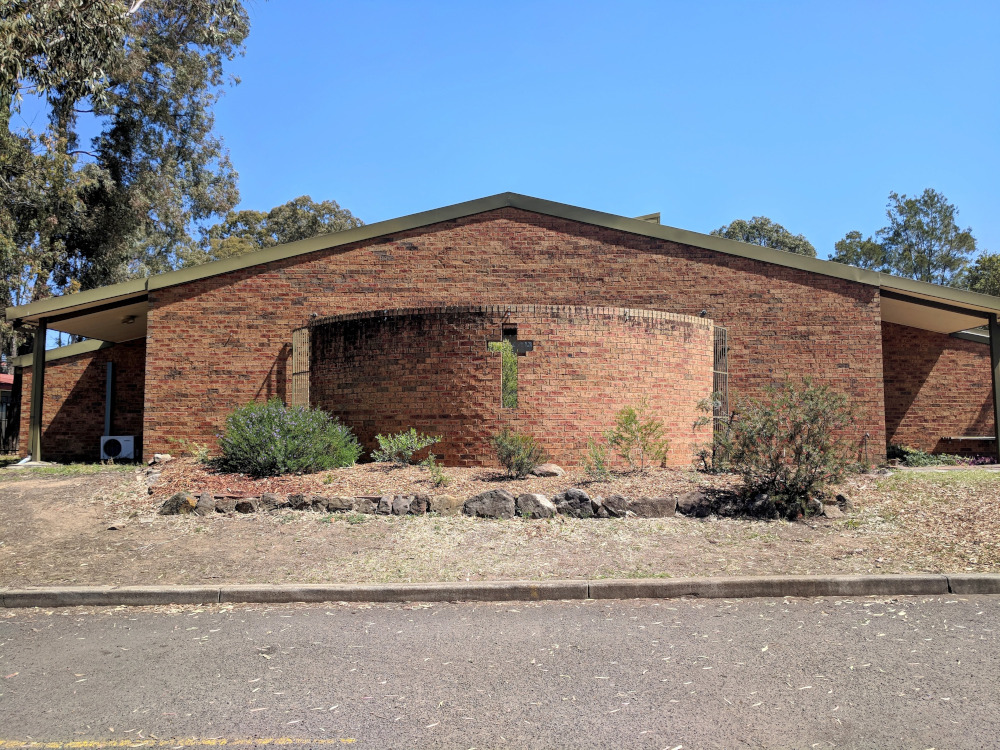They don’t want to be put up as doing a spectacular job because they have a long way to go. Still, Minchinbury Anglican Church in Sydney’s West is having a real crack at making their church a place of welcome for people living with disability.
The push began with one member, Elizabeth Spencer, speaking up in the church’s Annual General Meeting. “There’s a point at the end of the AGM where you can put matters to the incoming parish council and say, yes, we’d like you to consider this over the next year, “ she recalls. “So I stood up and said, I’d like you to consider in the accessibility issues, at the front of our church, there are some rough surfaces and, and other things like that.”
The Parish Council took things seriously and gave Spencer the job of setting up an Inclusion and Accessibility committee.
It turns out that she was an excellent choice for the job. “I’m married to Kevin; he had a motorcycle accident when he was 19, 44 years ago; she explained. “He suffered quadriplegia and all the complications of that all that time. We married 18, almost 18 years ago. He lives with disability, quite profound disability. And I support him and partner with him in that. My first husband was well and non-disabled until he got cancer. He was very sick for two years and then passed away at 43. So I’ve got a lot of experience as a carer. I also have lived with fatigue syndrome myself for 16 plus years, so I’m sensitised to the needs of disability because of life experiences.”
The Other Cheek thanked Spencer, who volunteers as the Engage minister for the church, for being so frank. “Oh, there’s no point beating around the bush with these things,” she responded.
And when it came to setting up the committee early last year, Minchinbury church had many people with valuable experience. Besides Spencer, the new committee features an education department specialist in challenging behaviour, “ the sort of children who are at risk of not being allowed in school’; a stepparent of a young person with intellectual disability; a teachers aide in a special school; a speech pathologist and a member who delivered a great line in a church video “unsurprisingly I have a physical disability” as he wheels himself up a ramp on to the church stage.
As I talked with Spencer and examined some documents from the church, it occurred to me that this church has more than average interaction with people with disability than many, even before they started – with some nonverbal children and attendees in wheelchairs. Housing economics means that people living with disability are more likely to live in certain parts of our cities. Spencer told The Other Cheek she always sees many people with visible disabilities when she visits the local shopping centre at Mount Druitt.
The new Inclusion and access committee returned to their parish council with a list sorted into projects that could be done immediately and then medium and more challenging goals. They drew strength from the work of their diocese (region) Social Issues Committee work led by disability advocate Louise Gosbell.
Some of the “easy” ones:
- Printed materials for congregational use to have large print versions, at least 18-point font size, with 1.5 line spacing
- Projected text is large and in high-contrast colours; white font on a black background is preferred.
- Large print Bibles are available.
- Announcements in written form as well as spoken, in an email, text or a social media post.
- Inclusive language, for example, when asking people to stand to sing, add a couple of words to say, please stand if you are able,
- Adjustable height chairs with arms placed close to the entrance, space for wheelchairs in church.
- Training for leaders of kids and youth with disabilities, seeking more leaders specifically to support kids with disabilities, their parents
Minchinbury is working on their “Category B” list of items that cost more money but remove barriers.
- A hearing loop
- Eliminating the step to get into the church building
- More accessible spaces in the car park, and wider ones so people who need extra loading space can use them
- The toilets – a separate accessible toilet with room to manoeuvre a wheelchair. What happens if someone has an opposite-gender carer?
- A ramp to the stage – Minchinbury has one, but it’s steeper than the standards.
And then there’s a longer-term list
- a larger foyer and broad flat access to the front of the church building
- a keyless entry system for the front entrance and place the alarm so it can be reached by people in wheelchairs
- Actively reach out to the disability community with the gospel, and provide programs where the gospel is accessible to all in a place that is safe, comfortable and welcoming for people with disabilities and their families.,
As you can tell, this is a work in progress. And Minchinbury has advanced in some areas better than others. The needs of people with intellectual Disability is one big area Spencer acknowledges they could emphasise in the future. Other churches have worked hard on that but have not made the other changes Minchinbury has started on.
“Spur on each other on to love and good works,” the writer of Hebrews urges us. The example of this church should help with that.

